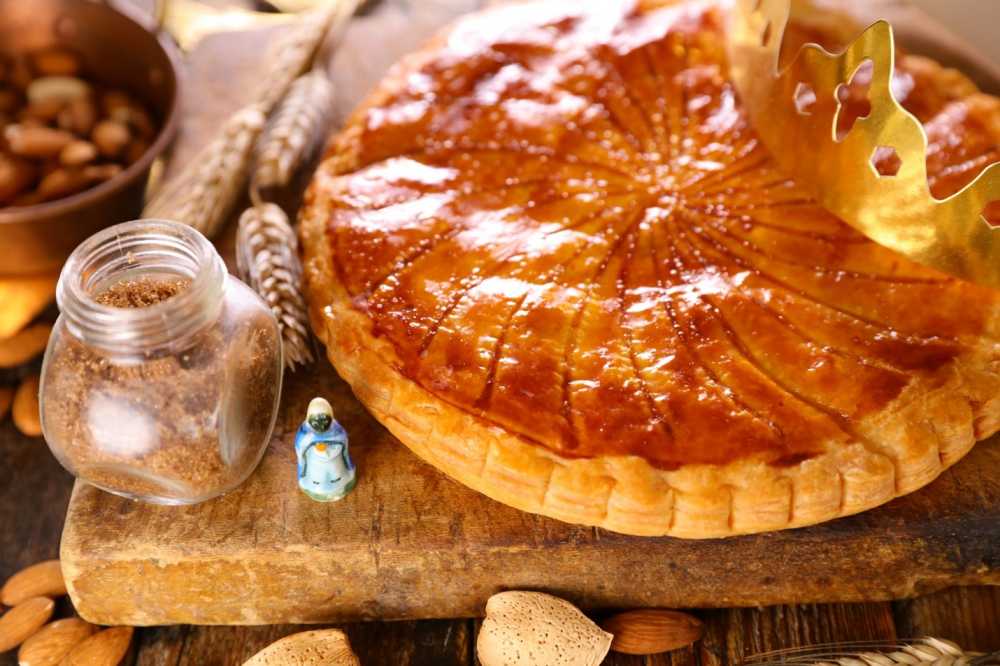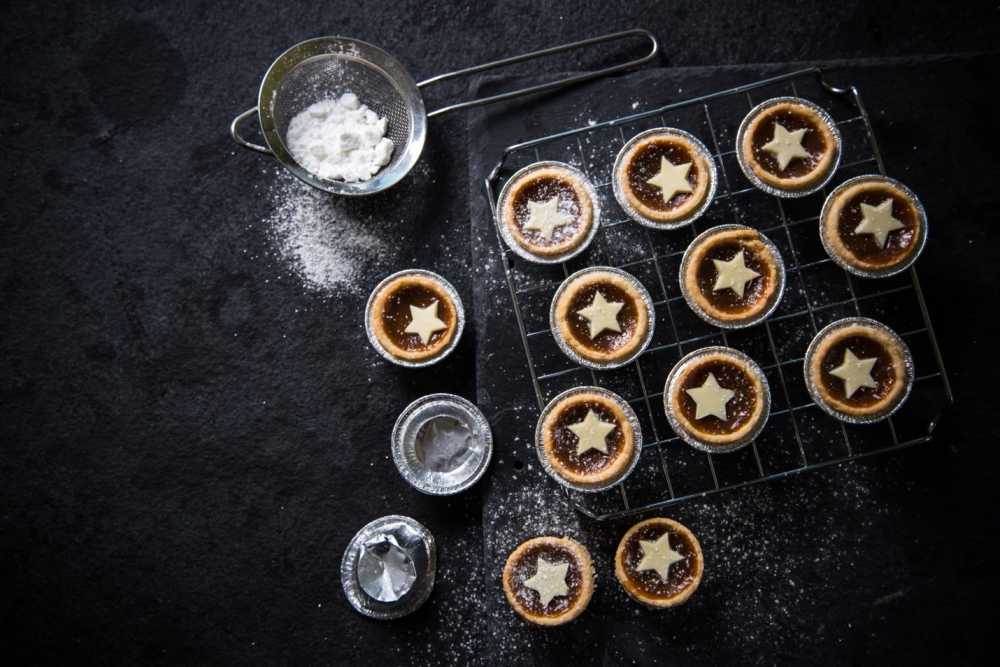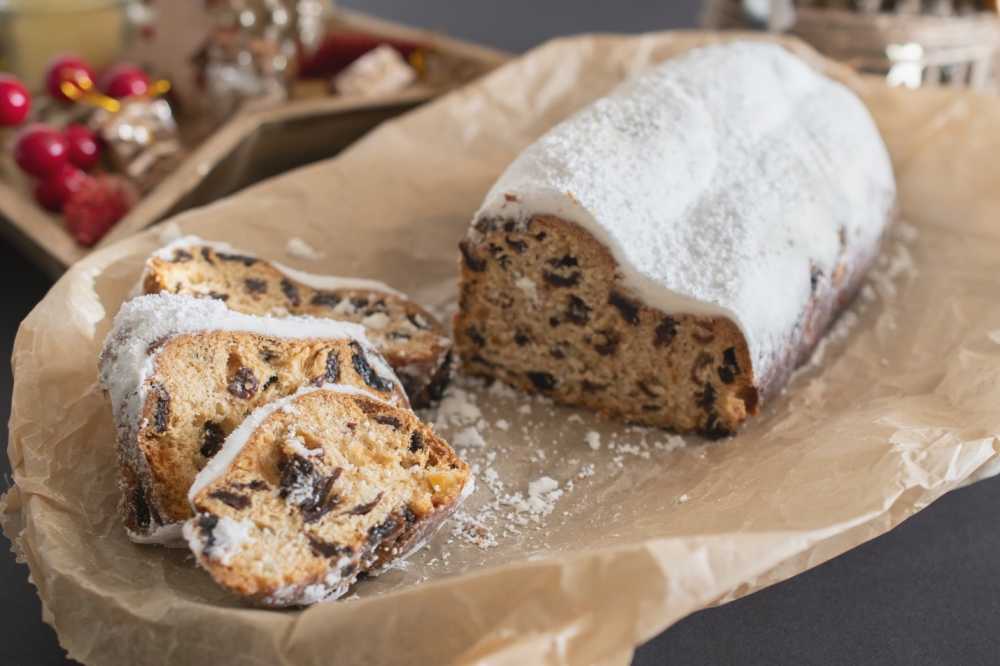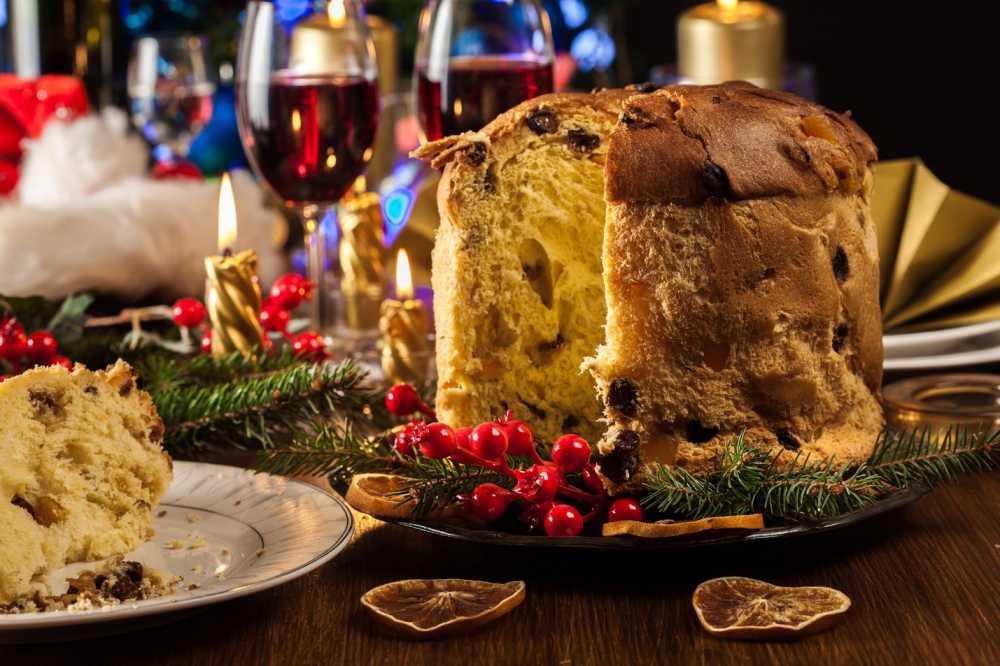If you can’t travel during the holiday season to different Christmas markets worldwide to learn how other countries celebrate Christmastime, look no further. This extensive Christmas dessert and dish guide will bring you to different countries and will make you want to catch the next flight out. The holiday season is a time for travel, reflection, and celebration.
From traditional French Galettes des Rois and English Mince Pies to German Stollen and Italian panettone, these desserts are sure to appeal to anyone looking for an international culinary experience. Discovering recipes from all over the world allows us to appreciate cultural diversity while exploring flavors we may not be familiar with yet. Plus, it’s a delicious way to bring the spirit of Christmas into our homes. So whether you want something light or decadent, savory or sweet – there’s something here for everyone!

France: French Galettes des Rois
The French Galettes des Rois has said to have been invented by a Florentine nobleman centuries ago and is traditionally shared on January 6th, and it celebrates the arrival of the three wise men in Bethlehem. It is a puff pastry cake and usually filled with frangipane. Frangipane is a cream made from butter, eggs, sweet almonds, and sugar. French pâtissiers may add chocolate, apples, or candied fruits for a gourmet version. A fava bean (known as the fève) is hidden inside this pastry cake known as the “king”. The cake is browned in the oven and served with frangipane, chocolate, fruit, and cream. If we travel to the south of France, this traditional dessert is made with a twist. Instead of a puff pastry, it’s a sweet brioche dough flavored with orange flower essence and shaped into a crown. It has pieces of red fruit and sugar decorated on the top, with the fava bean still hidden inside. It is known that they played “find the king” at the table of Louis XIV, and the ladies who found the bean became queens for the day. Unfortunately for the ladies of the court, this custom was abolished.
To learn how to make Galette des Rois, here is the recipe: https://www.cordonbleu.edu/news/galette-de-rois-recipe-2020/en

England: English Mince Pies
Throughout history, mine pies have been enjoyed as a savory treat, warming and filling to whoever wants to enjoy them. Early on, they were served as a main dish, but now they are served to finish a Christmas meal and sometimes served with a heaping spoon of whipped cream or ice cream. Mince pies were first cooked and served in the Middle Ages and were filled with finely minced meat, fruit, and a liquid that preserved it. Mincemeat was a good way of preserving meat without drying, smoking, or salting it back in the earlier days. As with many traditional Christmas recipes, they all originated from somewhere and had a specific purpose and tradition attached to it. The mincemeat would be made on stir-up Sunday, the last Sunday before Advent. It also would be made along with Christmas pudding because the original Christmas pudding had meat in it. Stirring the meat was an event, and English tradition states that it should only be stirred clockwise for good luck and great fortune. Each family member of the English home gave the meat mixture a clockwise stir and to ensure good health and happiness for the next year, a mince pie should be eaten every day for the twelve days of Christmas. The twelve days of Christmas start on Christmas Eve and ends on January 5th.
Nowadays, you can make a mince pie with or without meat. Dried fried, candied peels, currants, etc. can be mixed for a vegetarian and tangy modern tradition. If you want to keep the old English traditions, here’s a recipe for the traditional mince pie: https://www.thespruceeats.com/easy-traditional-mince-pie-recipe-435108

Germany: Stollen Bread
Stollen is a fruit cake bread and has been a staple German Christmas treat for ages. It is so popular that you can now find it in many other countries leading up to Christmas. Stollen bread today is known as rich, sweet, and filled with fruit and nuts. The original Stollen was the opposite and only contained flour, yeast, and water, resulting in a hard and tasteless loaf. The Advent period was a fasting time, so butter and milk were not allowed in the original recipe. In the 15th century, Prince Elector Ernst and Duke of Saxony, Albert III, wrote to the Pope in Rome and asked if he would allow butter when baking Stollen. The pope denied their request, and in 1490, five popes later, when only Prince Elector (Ernst’s son) and his household used butter without paying a fine. Eventually, others in Saxony were allowed to use butter in Stollen but only if they paid a twentieth of a gold coin every year. The butter ban was lifted when Saxony became Protestant in 1527. A win for butter!
Many sources state that Stollen was introduced in Dresden in 1474, and the bakers in Dresden gifted their rulers one or two loaves of Stollen, weighing 36 pounds each. This Stollen was carried through the city to the palace by eight master bakers and eight journeymen. This tradition ended when the Elector of Saxony, Augustus II the Strong (who also was the King of Poland and Grand Duke of Lithuania) instituted the tradition that the Baker’s Guild of Dresden was to create a Stollen big enough for everyone to enjoy it. This led to the Stollen Festival, where around 24,000 people participated in the celebration. Matthäus Daniel Pöppelmann designed the oven that fit a 1.8 ton Stollen loaf. It contained 3,600 eggs, 326 churns of milk, and 1000 kilos of flour. It took 100 bakers and their assistants a week to bake. Once baked, it was pulled by eight horses in a carriage. Even though this festival took place in June and definitely was made with eggs and butter, it is known that this event was the precursor to today’s Christmas Stollen and German Christmas Markets.
Learn how to make today’s modern version here: https://www.daringgourmet.com/stollen-german-christmas-bread/

Photo courtesy of King Arthur Baking
Italy: Panetonne
Panetonne is another famous bread that originates in Italy. The legend is that in 1495 during a luxurious Christmas banquet given by the Duke of Milan, the original dessert that was going to be served was burnt. A young cook, Toni, saved the day by coming up with a rich brioche bread filled with candied fruit and raisins. This dessert was the star of the Christmas banquet, and the Duke loved it so much a tradition was born. “Pane di Toni” is the name of this new tradition, and later in 1821, it became a symbol of liberty. The raisins and fruit were replaced by red cherries and green colored citrus, which created a red, white, and green Italian flag. This is a legend and maybe even a myth, but the truth is that the history of panettone is unknown.
Here is a homemade panettone recipe that surpasses any store-bought loaf: https://www.kingarthurbaking.com/recipes/overnight-panettone-recipe
As the holiday season approaches, it’s fun to recognize and appreciate Christmas traditions and recipes. From decorating the tree to exchanging presents and baking unique desserts, Christmas is a time for family, joy, and celebration. But how did these traditions originate? Knowing their history can be a fun way for families to connect with one another during this special time of year. The history behind the most famous French, English, German, and Italian Christmas desserts will give you a brief perspective on how these pastries came to be and how they are made in today’s modern-day world. Christmas is an incredibly diverse holiday celebrated around the world in different ways. Examining the customs of other countries can be incredibly fascinating — from traditional German cookies such as Vanillekipferl or Pfeffernüsse, to Italian panettone or French buche de Noel. Learning about these recipes can also be an excellent way for families to bond over food: discovering new ingredients and flavors that may have inspired your favorite holiday treats!
Here’s a recipe to the German Vanillekipferl cookies: https://www.daringgourmet.com/vanillekipferl-austrian-vanilla-crescent-cookies/
Here’s a recipe to the German Pfeffernüsse cookies: https://www.daringgourmet.com/pfeffernuesse-german-iced-gingerbread-cookies/
Here’s a recipe to the French Buche de Noel (yule log): https://www.allrecipes.com/recipe/17345/buche-de-noel/
It’s always possible to start a new family tradition that recognizes these unique recipes and dishes made all over the world. There are so many exciting possibilities when it comes to incorporating something special into your Christmas celebrations. If you have an afternoon free, why not whip up some homemade treats for the whole family to enjoy? You could make traditional recipes such as gingerbread cookies or sugar cut-out cookies or learn one of the above international recipes for something new.


Recent Comments